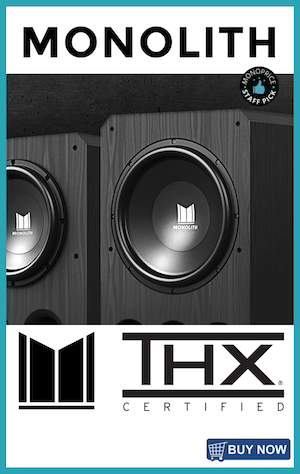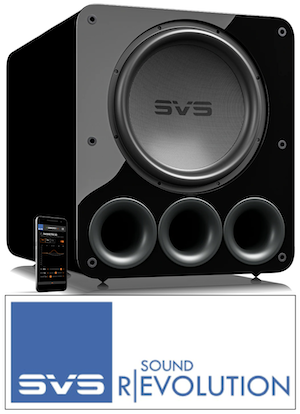- Manufacturer & Model
- Klipsch The Three with Google Assistant
- MSRP
- $499
- Highlights
- Gorgeous throw-back design loaded with high-quality materials, simple set up and intuitive controls, wireless connectivity guided by Chromecast built-in, voice control with Google Assistant, multi-room/whole-home capable, refined voicing and excellent sound quality.
- Summary
- Klipsch's The Three with Google Assistant delivers head-during sound performance backed by highly usable convenience technologies. High-quality streaming is handled by Chromecast technology, with the additional benefit of voice control through Google Assistant. From unboxing to set up and playback, Klipsch's gorgeous speaker design doesn't disappoint. Sound quality is balanced and controlled, making this speaker easy to recommend.
One gentle stroke across the top of Klipsch’s The Three wireless speaker speaks volumes, revealing an analog nature that’s punctuated by organic materials and a premium finish. It’s a natural presence that’s often lost with modern wireless speakers and Klipsch wouldn’t have it any other way, as The Three’s disposition fits perfectly with the company’s Heritage Series leanings. Don’t let that aged beauty fool you, however, because the speaker packs a powerful punch backed by cutting-edge wireless tech, modern conveniences, and sound that’s simply superb.
Today, we’re putting The Three ($499 MSRP) under the microscope, analyzing its usability and digging deep into performance capabilities. So, grab your favorite tweed jacket, gather ‘round the fire, and explore what the speaker has to offer.
Out of the Box
Not to harp on The Three’s physical attributes, but it certainly carries a seductively natural presence. Having only seen photographs of the speaker prior to this review, I wasn’t sure what to expect as it was released from its rather utilitarian packaging. And if small hints of elegance on the exterior of the box – such as thin gold foil lines and stately scroll swirls – weren’t enough of a signal, my fingers’ first contact with the speaker ignited an immediate rush to judgment.
If you’d like to watch the speaker get unboxed, click on the video below.
Often physical weight is a relative indicator of quality and The Three checks that box thanks to a bottom-heavy 10.3 lbs. However, it’s the visual and tactile appeal of the speaker’s sealed cabinet (13.7” W x 8” D x 7” T) that truly sets the stage. The Three’s exterior features a trio of appealing materials – real wood veneer panels, a taut linen grille, and refined brushed metal surfaces – complimented by notable details, such as a nifty Heritage badge, arched wood isolation feet, and a notched metal selector knob. Those attributes conjure the smell of a craftsman’s woodshop, unleashing the mystique of an era when families would gather around a radio for a night’s entertainment. Overall, fit and finish match what you’d expect from a product costing a dollar short of 500-large.
Size-wise, The Three’s cabinet has some depth to it, but placement and in-room aesthetics are aided by the fact that it lacks any bulky external power supply. All of that is handled internally, which means the speaker merely needs a standard power cord for juice. Just keep in mind, you’ll need about 1.5” of clearance behind the speaker once the power cord is inserted, giving the speaker a functional depth of roughly 9.5” when placed against a vertical surface.
Set Up and Onboard Tech
There’s not much to getting The Three up and running. Simply plug it in, wait roughly 35 seconds for initial boot-up, and follow the Google Assistant voice prompts. The Google Home app (iOS, Android) is needed to complete set up, which quickly integrates the speaker with your Google account and home network, along with linking directly to any YouTube Music, Google Play Music, Spotify, Pandora, and Deezer accounts. Notably absent is built-in support for some streaming favorites, such as TIDAL. But fear not, because you can engage high-quality streaming from TIDAL and others by using their respective apps and Chromecast.
Beyond that, the speaker is controlled by voice, within associated apps, or though rather basic top-mounted controls. Those controls include a Google Assistant mute button (a comforting touch for privacy seekers), a Bluetooth pairing button, a combination playback/volume controller knob, and four LED indicator lights that complete an intuitive interactive experience.
All said, unboxing and set up takes roughly five minutes, and my experience was devoid of any hiccups, reboots, or head-scratching moments.
Tech-wise, the speaker carries dual-band Wi-Fi connectivity (2.4GHz/5GHz, 802.11 n/ac), 192kHz/24-bit decoding of Hi-Res Audio (FLAC, WAV, AAC), access to hundreds of online music options, and multi-room or whole-home scalability with 96kHz/24-bit wireless performance with Chromecast enabled devices.
As mentioned, The Three is built around a sealed cabinet design, housing three drivers (two 2.25” full-range drivers, one 5.25” long-throw woofer) in an F-W-F pattern across its front and dual-opposed 5.25” passive radiators on the sides. Klipsch rates the speaker’s frequency response as 45Hz to 20kHz, which I wasn’t able to verify with in-room measurements due to a lack of physical inputs. That said, the speaker’s low-end output is confident and robust, leaving me little doubt that Klipsch’s factory specs are realistic.
Usability and Listening
Before we dive into listening impressions, let’s touch on some of the speaker's lifestyle aspects. The Three’s physical controls are well marked and easy to identify, which isn’t always the case with modern smart speakers. From a usability perspective, that simplicity makes daily operation streamlined and approachable (perfect for tech-challenged users). Of course, you also have access to the intelligent voice capabilities of Google Assistant. Owners can issue commands through a smart device and the Assistant app, or by simply talking directly to the speaker itself; the speaker’s dual topside microphones are an excellent pair of ears, even when music is playing loud.
Adding to a sense of lightness and personalization, Assistant gives owners the option of selecting various voices, including that of the great John Legend. I couldn’t resist recruiting the help of Mr. Legend and Assistant did a decent job of finding ways to interject his voice. For example, if I asked the speaker to play the news, Legend would proudly proclaim: “Here’s the latest news complements from Reuters TV US, 3:50 PM today.” And the news would engage. It might sound somewhat corny, but I found it to be a fun little touch.
Command-wise, Google Assistant never failed to understand my requests. Whether it was inquiring about the day’s weather, asking for a timer to be set, or requesting songs, Assistant was always at the ready. I was particularly smitten with its song finding abilities, which involved diligently digging through my linked Spotify account for albums, artists, and custom playlists, and was doubly impressed that Assistant accurately found songs even when given partial information or an incorrect song title. Equal ease was experienced when tapping TIDAL or music stored on my smartphone. The entire experience was smooth sailing, boosted by the fact that The Three never encountered a hiccup necessitating a power down or factory reset – it just worked, which hasn’t always been the case with other smart speakers I’ve reviewed.
As pleasing as The Three’s design and usability proved to be, the speaker does have a few noteworthy shortcomings. First, it’s not made to be unplugged, tossed in a bag, and lugged to an outdoor event. There’s no internal battery for times when you want music outside, and the speaker’s physicality doesn’t lend to bumps and bruises. It’s definitely a speaker that’s best placed and left somewhere in your home. Second, the speaker lacks physical inputs, including USB. That means no sourcing Hi-Res audio from a memory stick or connecting outside sources using RCA or mini-stereo cables. The Three is also devoid of a headphone jack.
Moving along to playback, The Three proved to be a phenomenal performer on many levels, dishing out a smooth and confident audio experience. It’s an evenly paced audio machine that delivers delicious sonics loaded with controlled highs, a balanced mid-range, and defined bass. The speaker’s sweet spot for playback resides in a volume zone best described as low to medium-high. For example, bass playback during Whethan’s “Good Nights” carried a confident full-bodied presentation to levels hitting in the low 90dB range, which is exceptionally competent for a speaker this size. I did find The Three lost a bit of luster at the extreme top-end of allowable volume, but that kind of listening is certainly atypical.
The Three appears to be rather indifferent to placement. It sounded great on a bookshelf, on a counter against a wall, or out in the open, having hit all the right notes everywhere I challenged it. And it goes without saying: the speaker looked fantastic everywhere too. The speaker is also capable of throwing a small-scale sound stage that blooms to life when its drivers are aimed at ear level, delivering discernable channel separation with songs such as David Bowie’s “Space Oddity.”
Time and time again, The Three delivered a performance befitting of its cost. Pink Floyd’s “Mother” sounded wonderfully haunting with a detailed warmth that flowed with refinement, and “Another Brick in the Wall Part 2,” showed off the speaker’s low-end competence with bass guitar notes etched with defined character and tonal balance. To put it quite simply, the speaker rolled with the punches, no matter what I threw at it, bathing my ears with class.
As I poured through favorite demo albums – including George Winston’s December and Norah Jones’ Come Away with Me – The Three’s character remained intact and fun to experience. Klipsch’s engineers nailed the voicing of this speaker.
Conclusion
Klipsch has stepped up to the smart speaker plate and hit a grand slam with The Three. From its physical design and natural-looking exterior materials to its voicing and onboard technologies, The Three is a wonderful compact hub of convenience and entertainment. Standing as one of the most attractive smart speakers I’ve reviewed to date, the addition of Google Assistant allows The Three to integrate into your life without confusing tech challenges or annoyances. And the speaker sounds as good as it looks, issuing beautiful room-filling sound that’s balanced from top to bottom. Add to that the ability to integrate with other Chromecast speakers and a range of smart devices, The Three can be used to bring great-sounding tunes and voice assistance to rooms all over your home.
If you’re looking for a top-level smart speaker and have the budget to spare, The Three should be on your shortlist. Heartily recommended!
Klipsch's The Three with Google Assistant Specifications
- Max Output: 106dB (0.5M near field)
- High Frequency Drivers: 2 x 2 1/4” (57.15mm) full range drivers
- Woofer: 5.25” (133.4mm) long-throw woofer, 2 x 5.25” (133.4mm) dual opposed passive radiators
- Enclosure Type: Sealed
- Power: 60 watts continuous @ <1% THD 80 watts short-term peak power
- Frequency Response: 45Hz ~20kHz @ -3dB
- Inputs: Bluetooth®
- Outputs: none
- Dimensions (WxHxD): 13.7” (34.82cm) x 7” (17.78cm) x 8” (20.3cm)
- Voltage: 110/240 VAC
- Weight: 10.32lbs (4.7kg)
- Included Accesories: Power Cord
Last edited:










